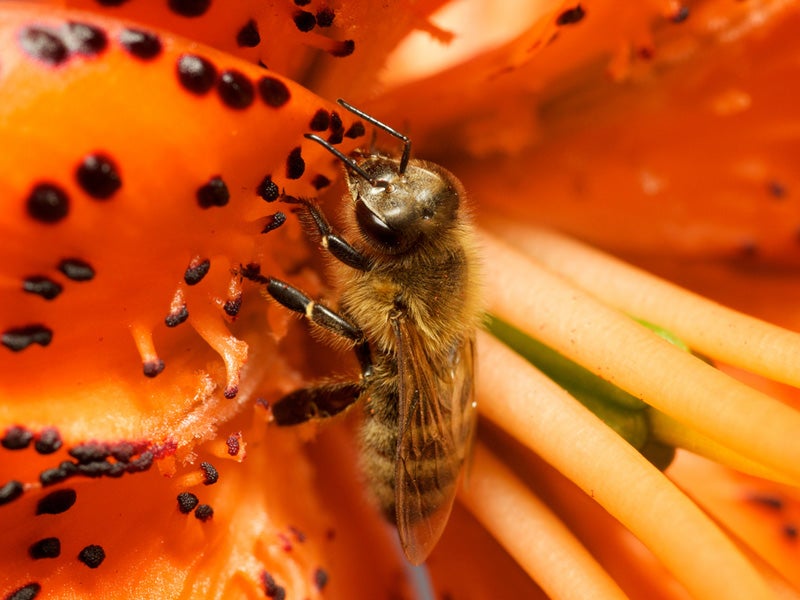Norway Offers Bees Safe Passage on the World’s First "Bee Highway"
Bee colonies are collapsing under the weight of habitat destruction, pesticides and monoculture farming, but Oslo has found a creative solution in a network of bee-friendly urban hubs.

This page was published 10 years ago. Find the latest on Earthjustice’s work.
Norwegian bees will soon be living the high life. Construction of a “bee highway” in Oslo aims to give these insects food, shelter and safe passage through the city. Bee hives and smatterings of flowering plants are popping up in backyards, on rooftops and on the terraces of companies and private citizens alike.
According to organizers, this is the first corridor of its kind, and it is drawing significant support from the local community. A major accounting firm in Oslo’s business district has covered parts of its terrace with flowering sedum plants and two bee hives, which together house about 45,000 worker bees. In a local garden, adults and schoolchildren gathered to plant sunflowers, marigolds and other nectar-bearing flowers. All participants are invited to post their contributions on the website polli.no, which maps the bees’ route across the city.
Though Norwegian bees aren’t as severely threatened by monocrop agriculture and pesticides as bees in the U.S., a third of the country’s 200 wild bee species are still considered endangered. According to a study by the International Union for the Conservation of Nature, Europe’s wild bee population is in dramatic decline, with nearly one in 10 species facing the threat of extinction. Another 5.2 percent of bee species are likely to be threatened in the near future.
The study suggests bees are dying because of human activity. Sources of food for pollinators have been depleted by intensive production of silage, or food for livestock, as well as widespread use of herbicides that has created grassland with few flowering plants. Climate change brought on by green-house gas pollution in the atmosphere has lead to heavy rainfall, drought and rising temperatures that can change or reduce bee habitats.
One of the most insidious threats bees face is pesticide use, particularly a class of pesticides called neonicotinoids, or “neonics,” which interfere with bees’ ability to navigate and find their way back to their hives, resulting in a phenomenon called “colony collapse disorder.” Farmers often favor neonics because they are less toxic to birds and mammals, but there has been a substantial decline in honey production since the first neonics were introduced in 1994. The European Union and a few non-European countries restricted the use of neonics in 2013, but in the U.S. their use is still widespread. Earthjustice is currently involved in a case to protect bees from the pesticide sulfoxaflor—a neonic that is highly toxic to honey bees and other insect pollinators.
Ironically, many farmers who use these pesticides end up being hurt in the long run because 30 to 40 percent of food production requires insect pollination. The destruction of bee populations has already forced farmers in the Chinese province of Sichuan to pollinate plants by hand, and in the U.S. many farmers must use rented hives transported across the country by truck to pollinate crops. According to a 2008 study, the process of pollination—a service bees traditionally provide for free—is worth an estimated $217 billion.
Bees are more than just buzz; they’re the lynchpin of global food production and an essential component of ecosystems worldwide. Without them, the biosphere would be thrown off balance. That’s why efforts to reduce pesticide use and support bee population growth are so essential. The city of Oslo’s bee highway is a promising step toward the revival of urban bee populations, but now we need longer bee “interstates” and a ban on dangerous neonics.